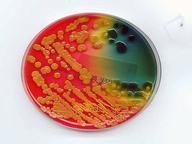Quiz Answer Key and Fun Facts
1. What is chemotaxis?
2. What structures are necessary for conjugation?
3. All of the following are acceptable ways to describe the arrangement of bacterial cells in a Gram stain EXCEPT...
4. What type of plasmid is the source of the problem with antibiotic resistance?
5. When exposed to unfavorable conditions, some cells have the ability to enter a type of "standby" mode in which they cease metabolic functioning. The structure they form is called the...
6. What correctly describes the cell membrane?
7. What process can bacterial cells undergo that allows them to pick up DNA fragments in their environment and incorporate them into their genome?
8. Which of the following organisms are archaebacteria?
9. What was the first synthetic antibiotic?
10. Which of these organelles can be found in a bacterial cell?
Source: Author
malarson
This quiz was reviewed by FunTrivia editor
crisw before going online.
Any errors found in FunTrivia content are routinely corrected through our feedback system.

